Gray Fox is complete. Porcupine is the next critter in line. We’ve seen evidence of a porcupine in our backyard, so he belongs in this drawloom parade.
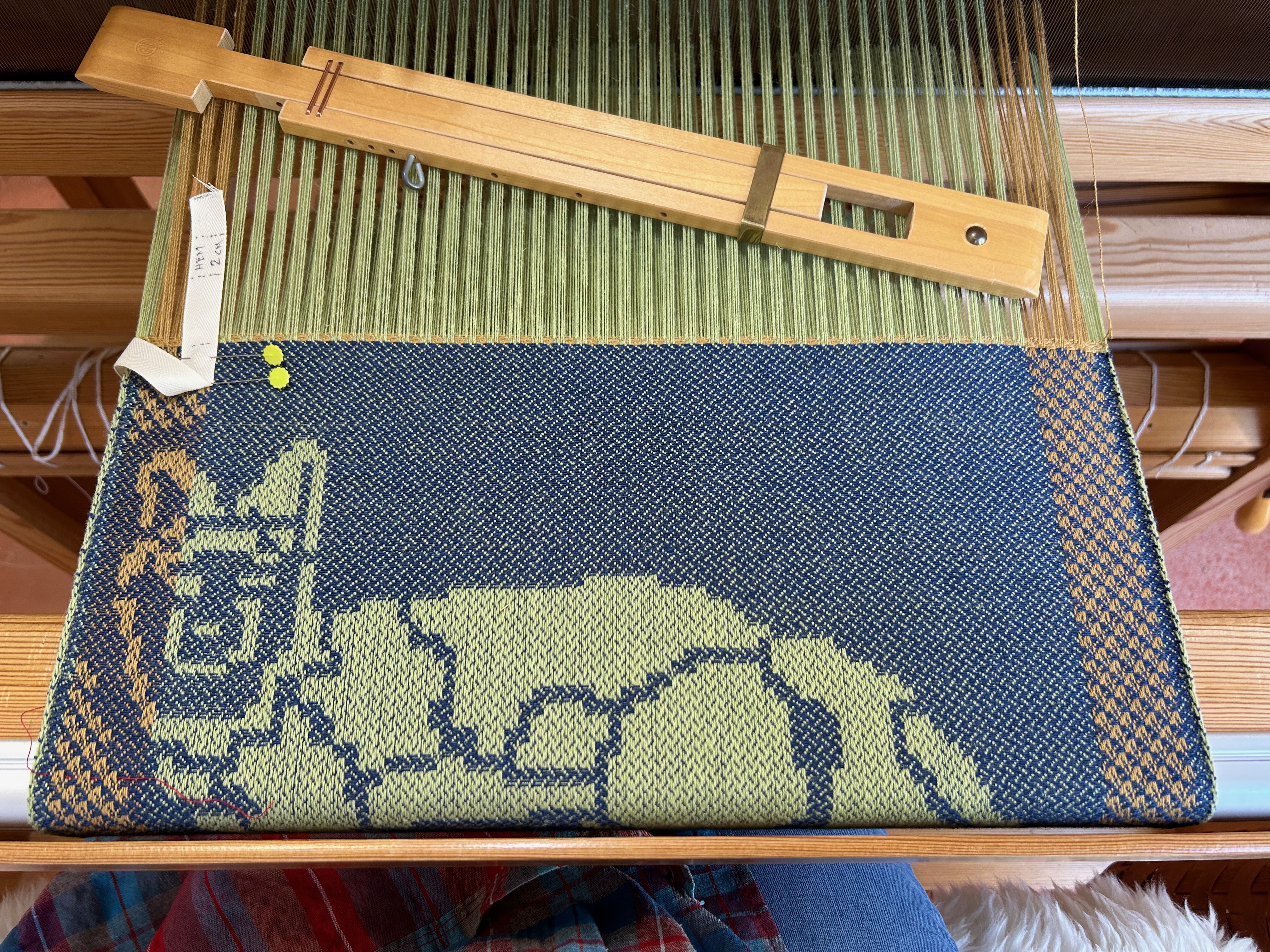
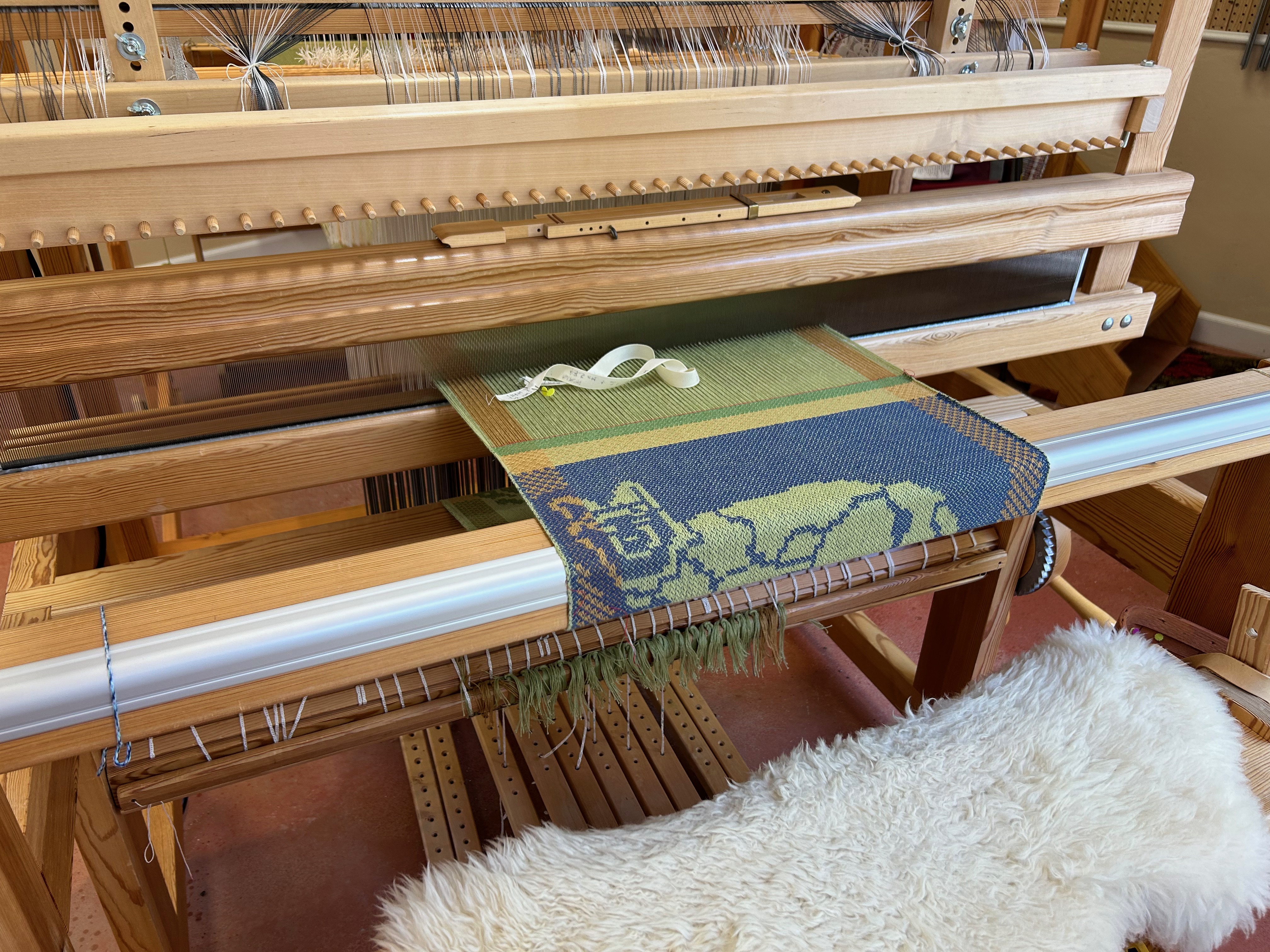
May you find interesting critters near you.
Happy Weaving,
Karen
a handweaver's journey
Gray Fox is complete. Porcupine is the next critter in line. We’ve seen evidence of a porcupine in our backyard, so he belongs in this drawloom parade.


May you find interesting critters near you.
Happy Weaving,
Karen
It pays to check your work. I have reached a new level of experience in distributing patterns shafts. I know how to do it backwards and forwards now. Literally. Unfortunately, I moved almost all of the pattern shafts before noticing that the spacing between units is not quite right. Uh oh! So, one by one, I reversed the distribution of pattern shafts to get back to the point of error—the very beginning. The reverse move was …more complicated.
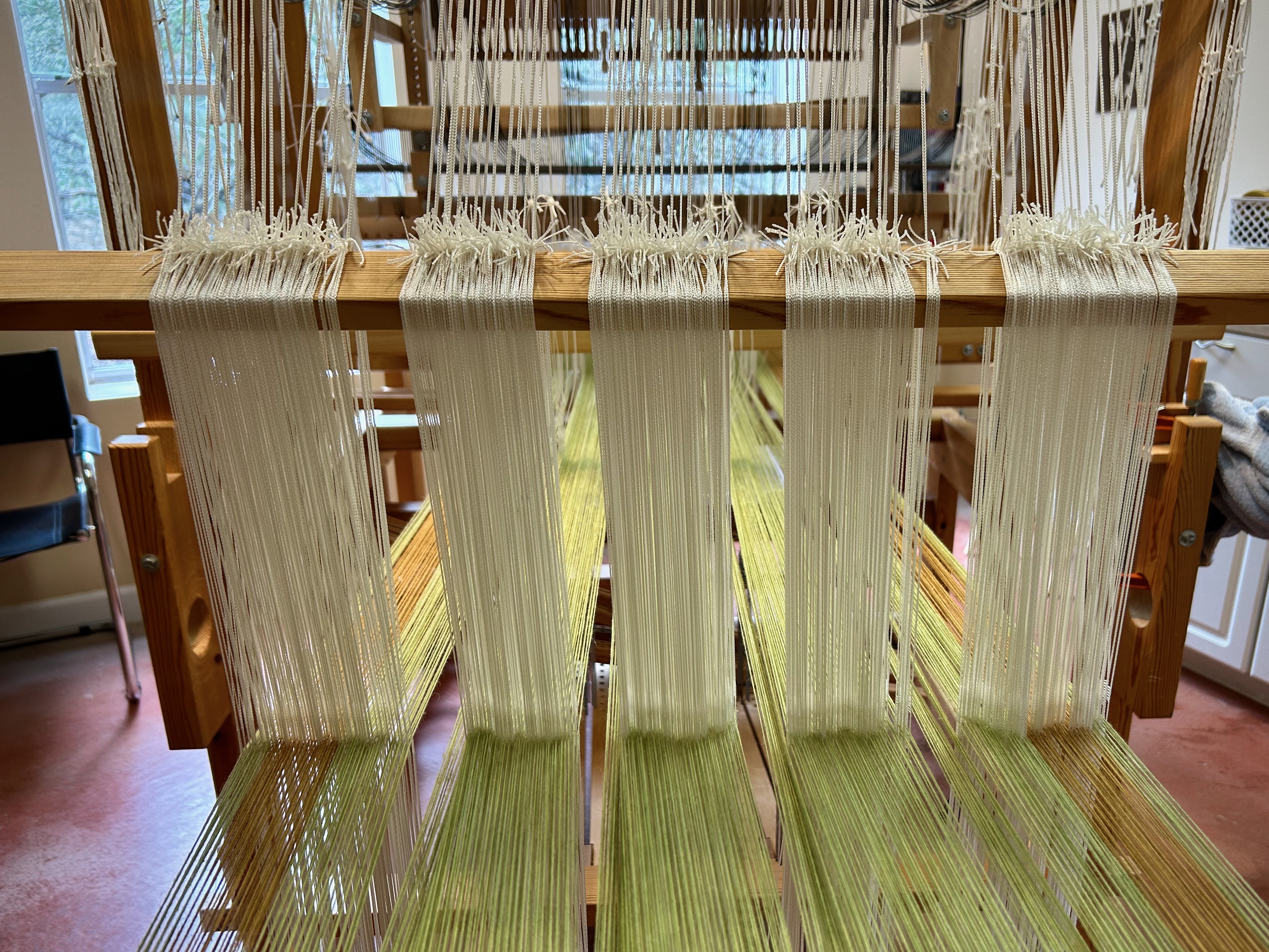
Lesson learned: Check my work. I am off by only one unit of threads. That small miss, however, is enough to sabotage the whole project if not corrected. The sooner I check my work against the master plan the better. Fortunately, everything at the loom is fixable. It’s never too late to start again.
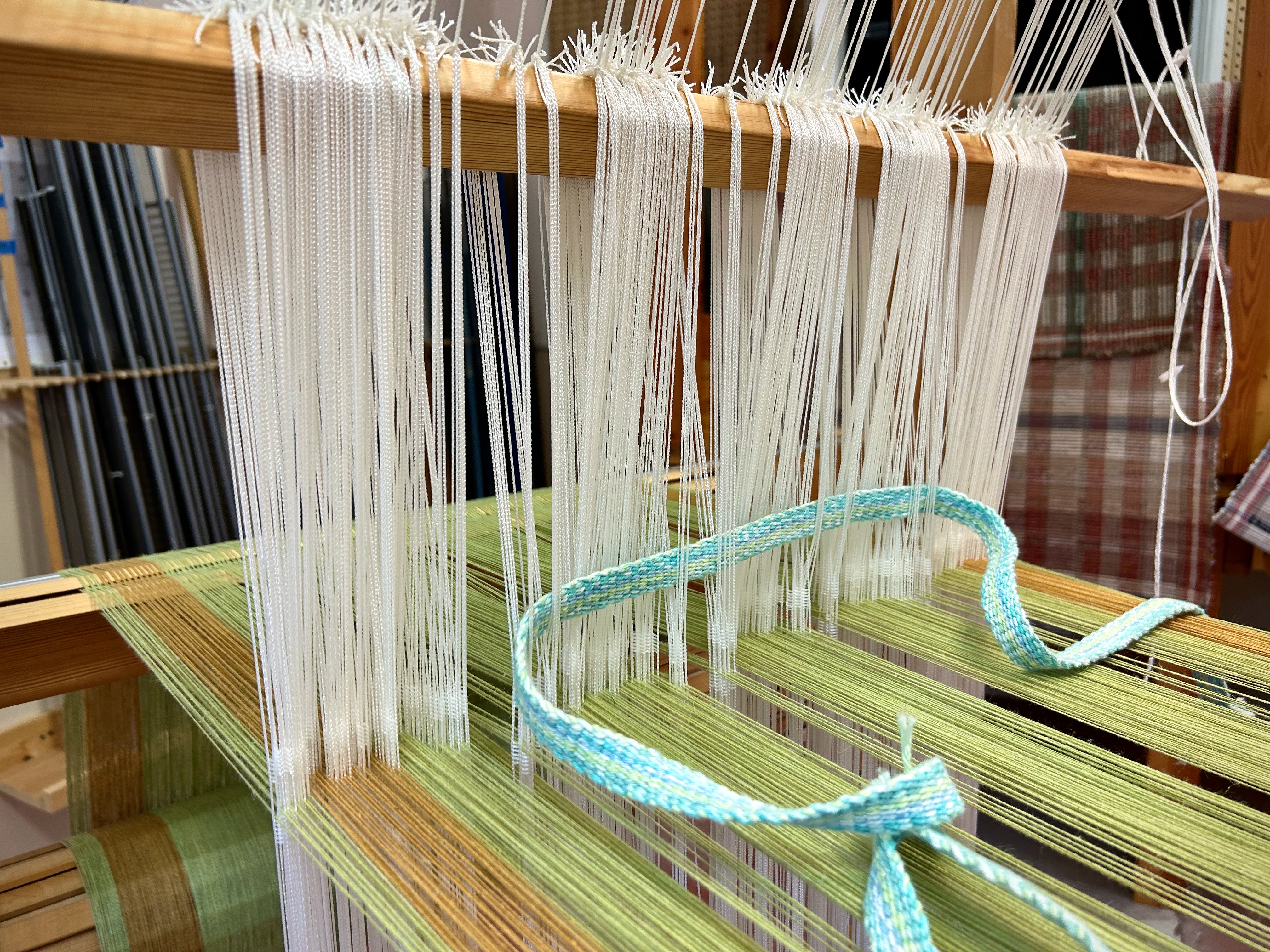
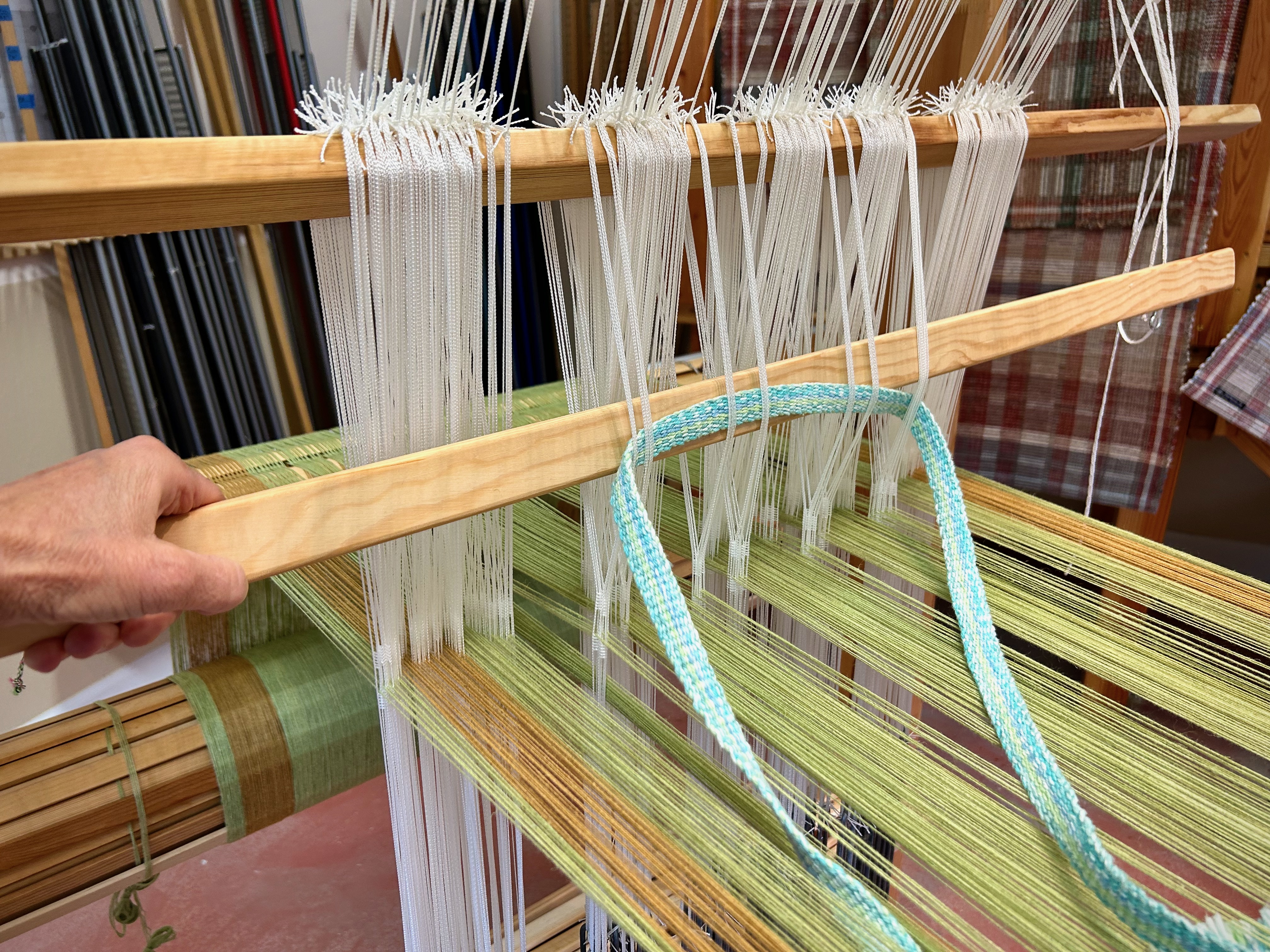
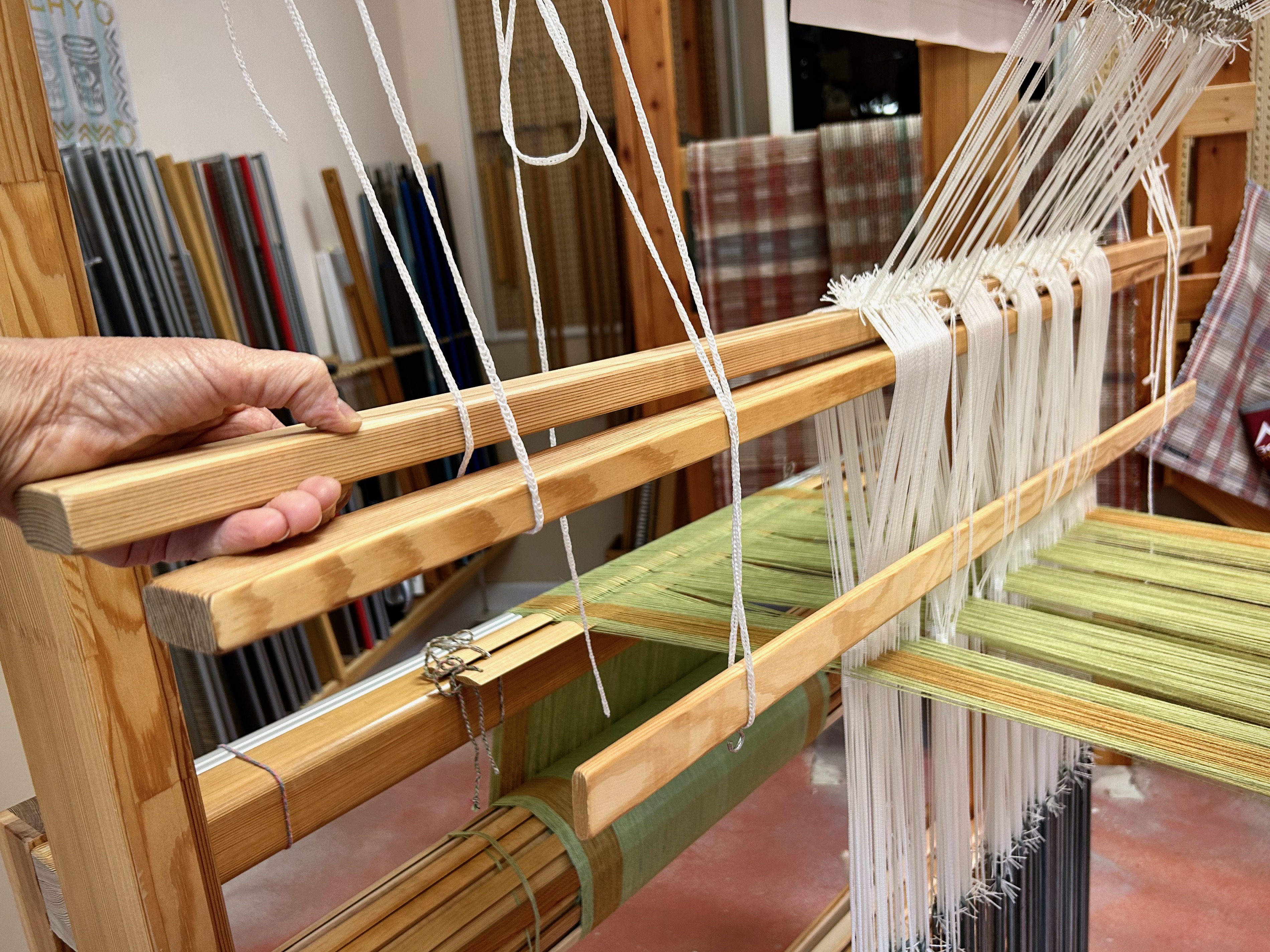
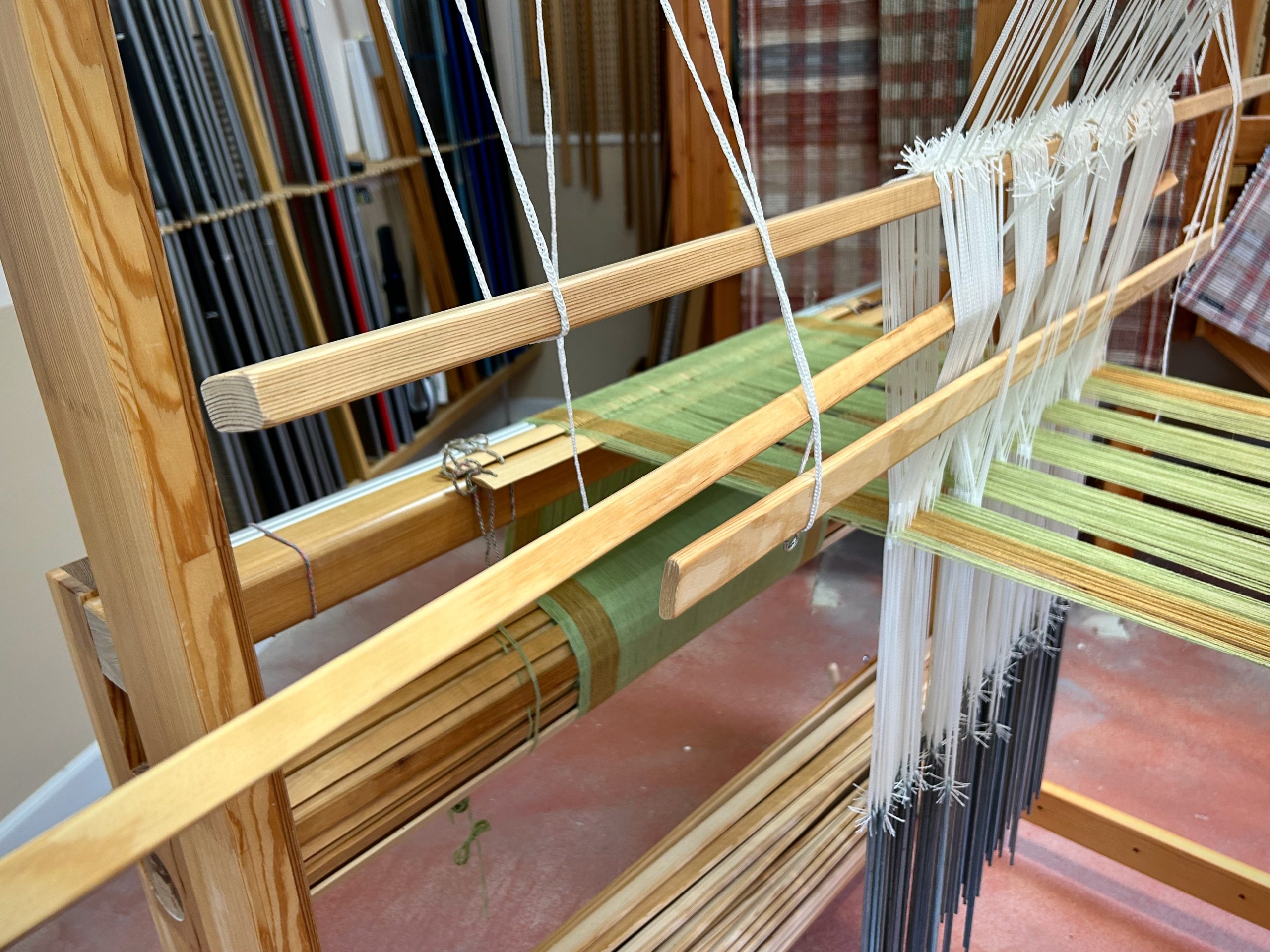
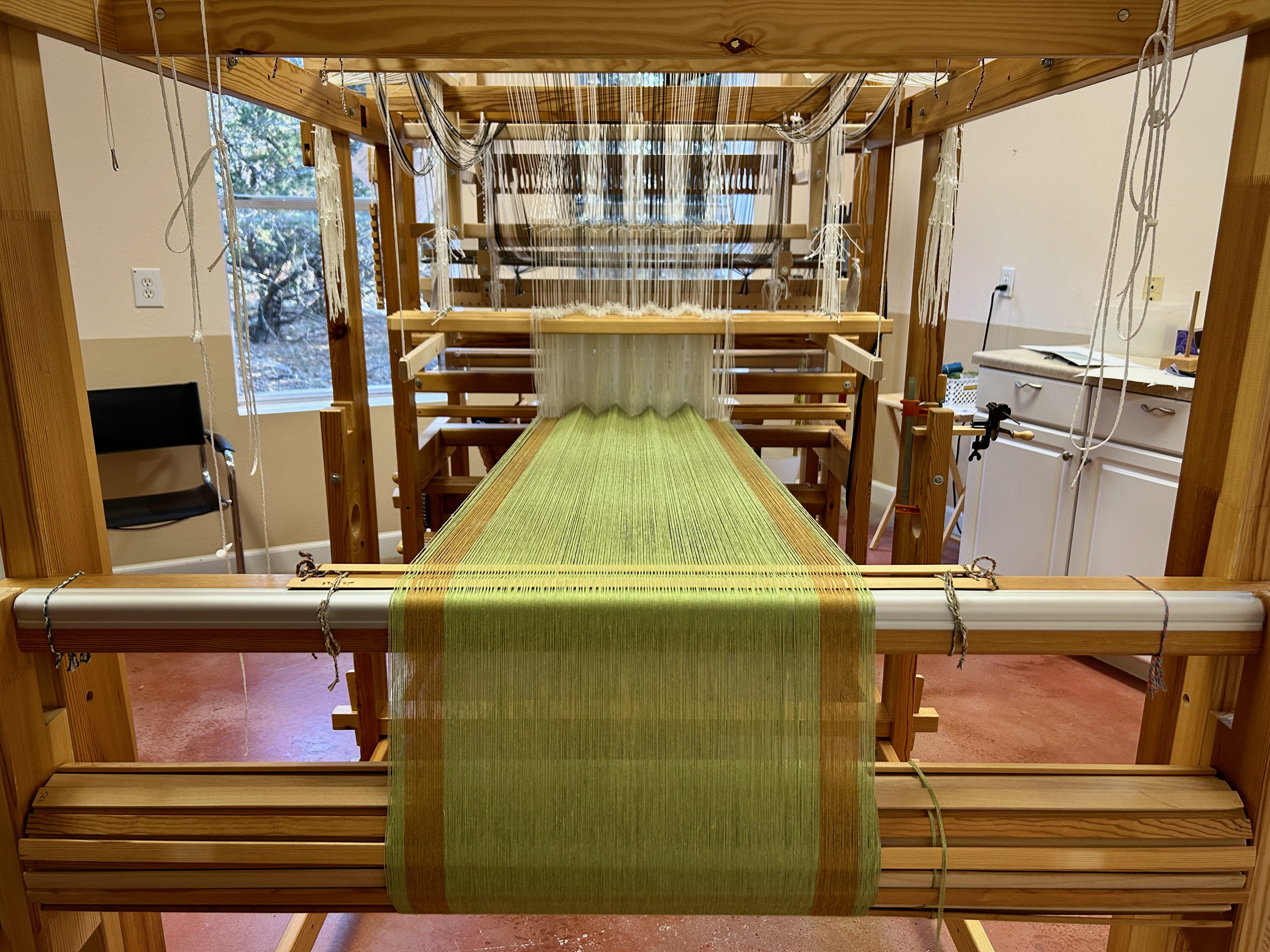
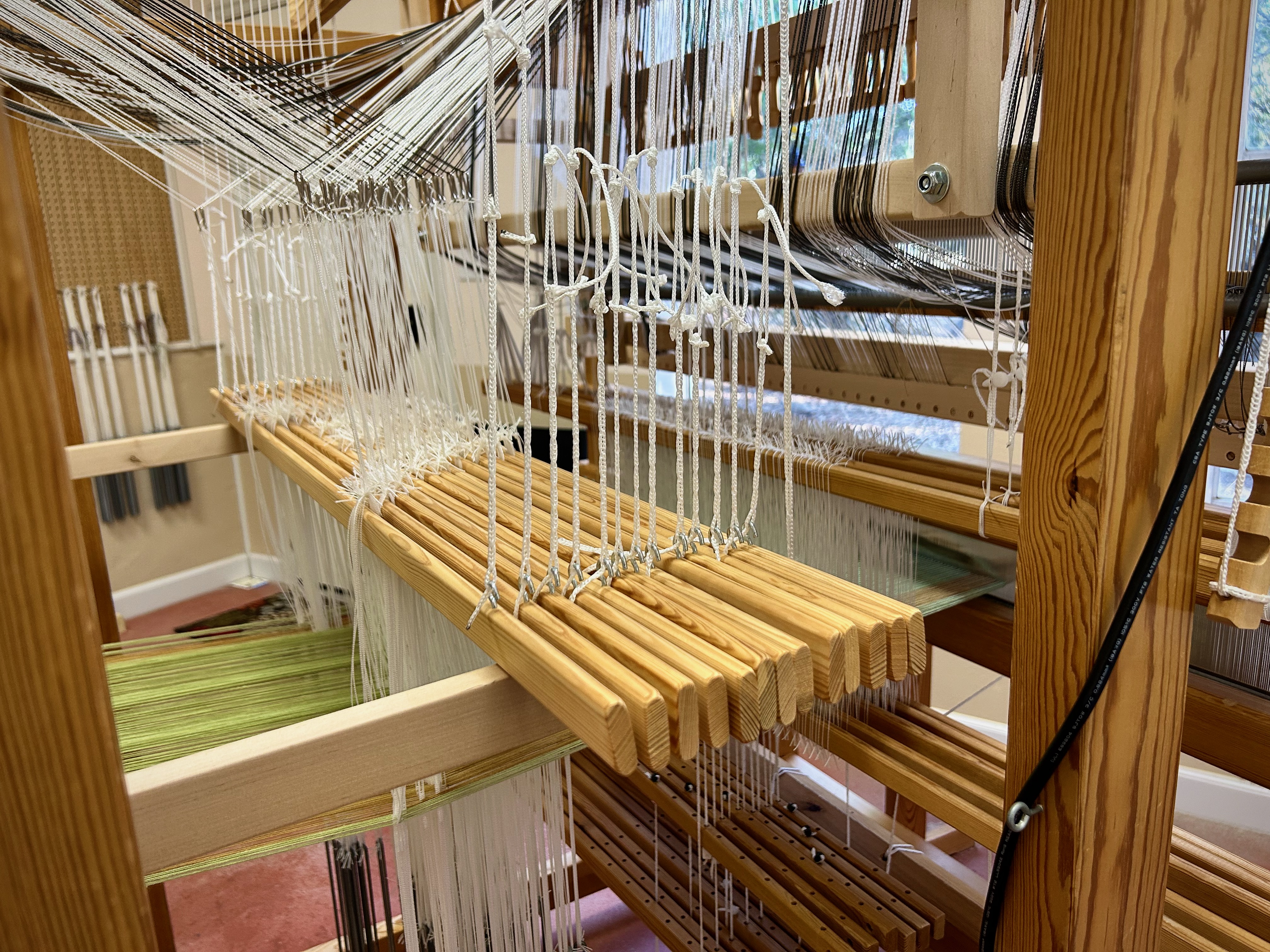
The sooner I check my life against God’s master plan the better. Fortunately, everything is forgivable. It’s never too late to start again.
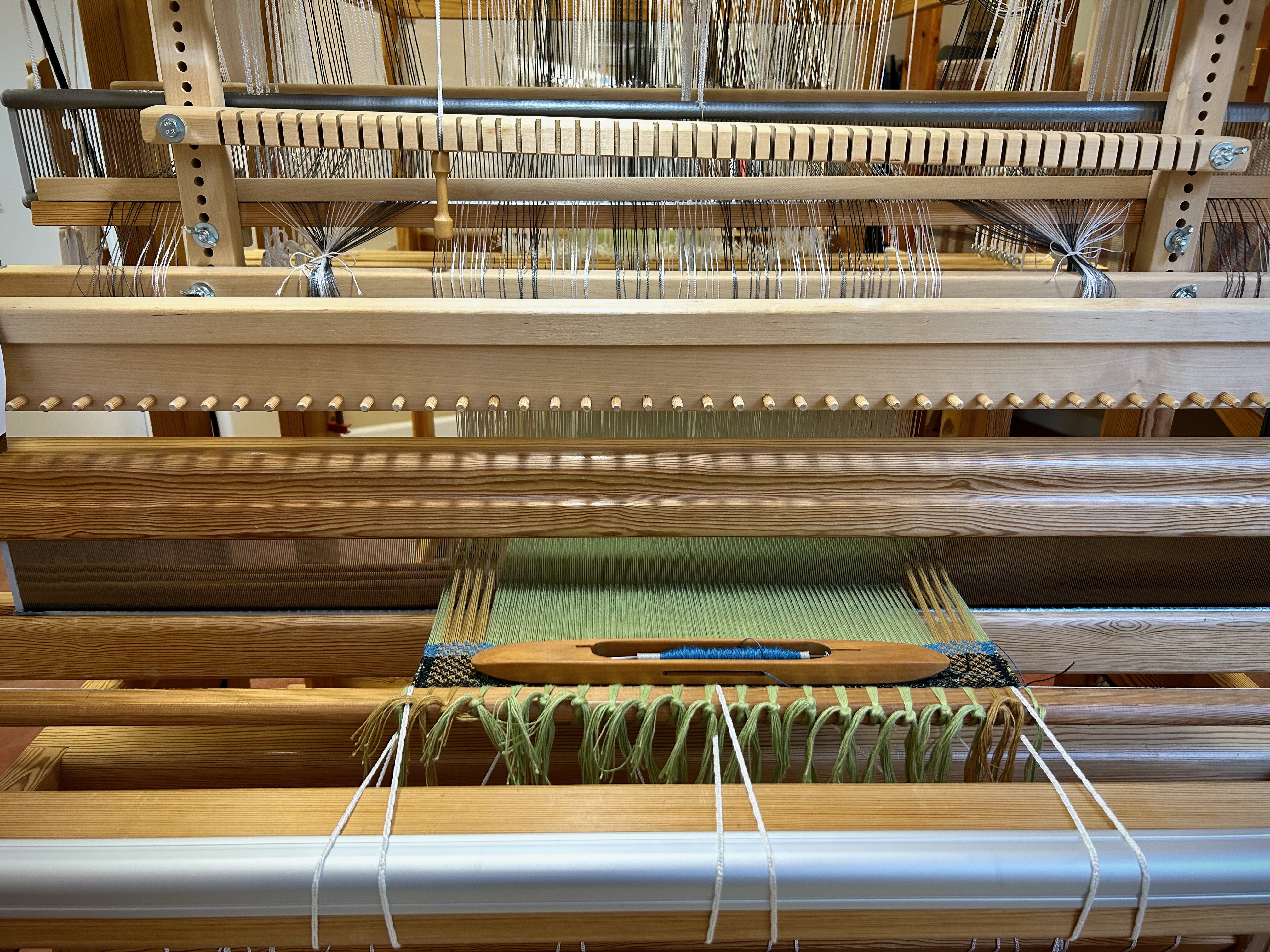
May you check for accuracy sooner than later.
Be blessed,
Karen
Four down, eight to go. It doesn’t take long to weave a placemat.
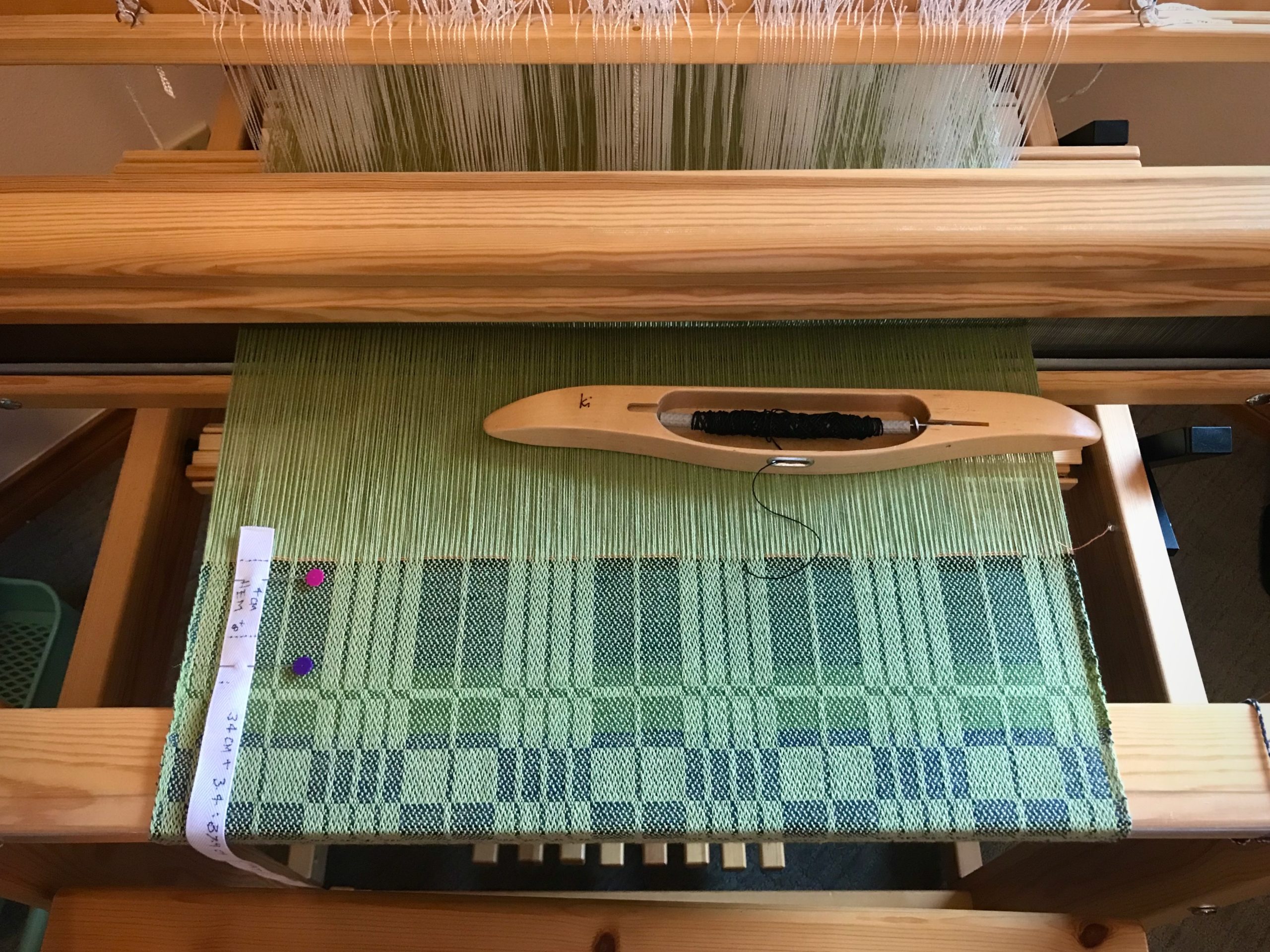
I weave a two-pick stripe between placemats. The stripe is always in the red or orange family of colors (unless the item being woven is red or orange). The red stripe is my cutting line, and two picks helps me cut on the straight and narrow. I once got confused about where to separate two towels that I had woven, and I cut in the wrong place. Yikes! That’s when I instituted the red thread rule.
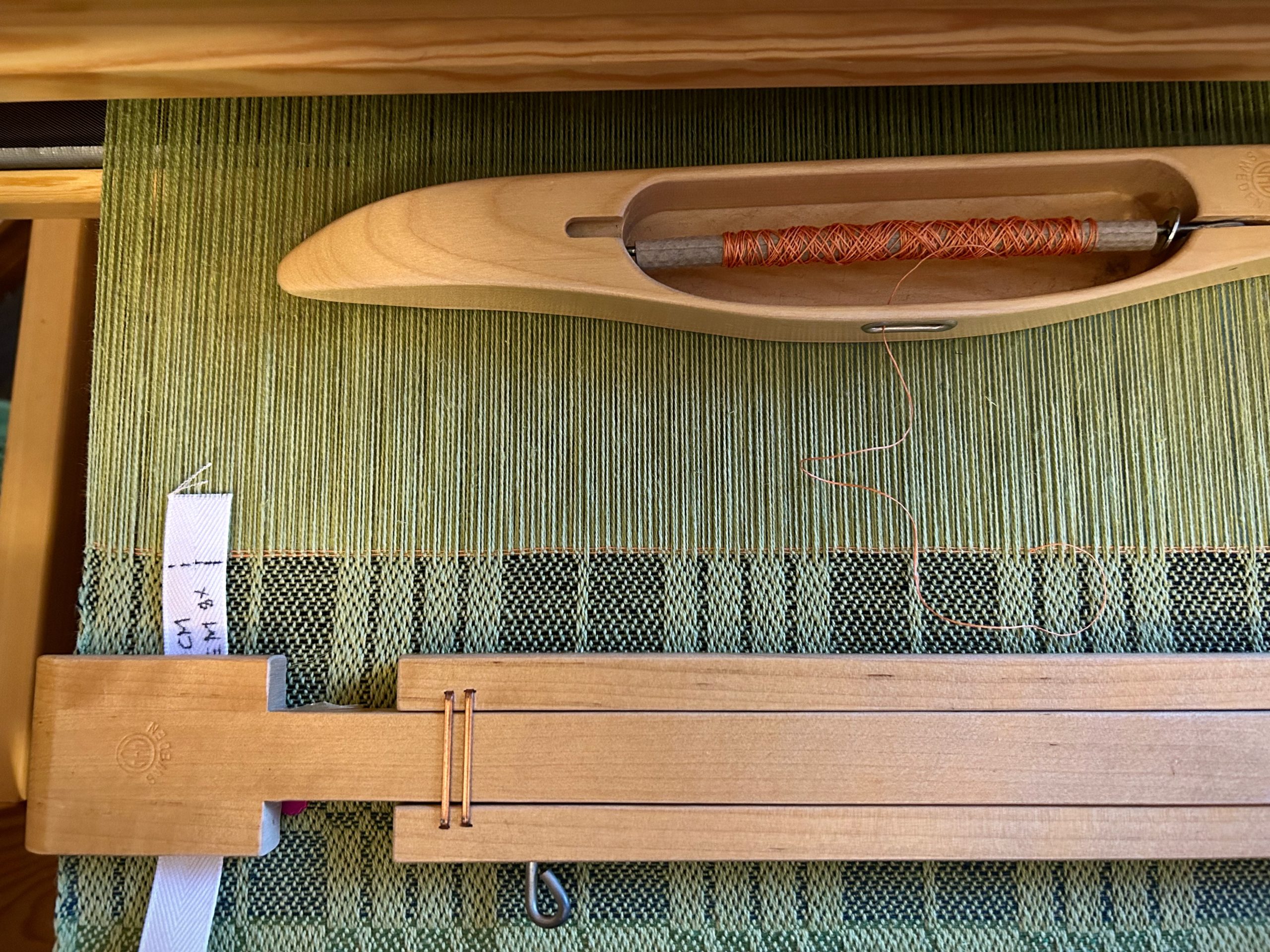
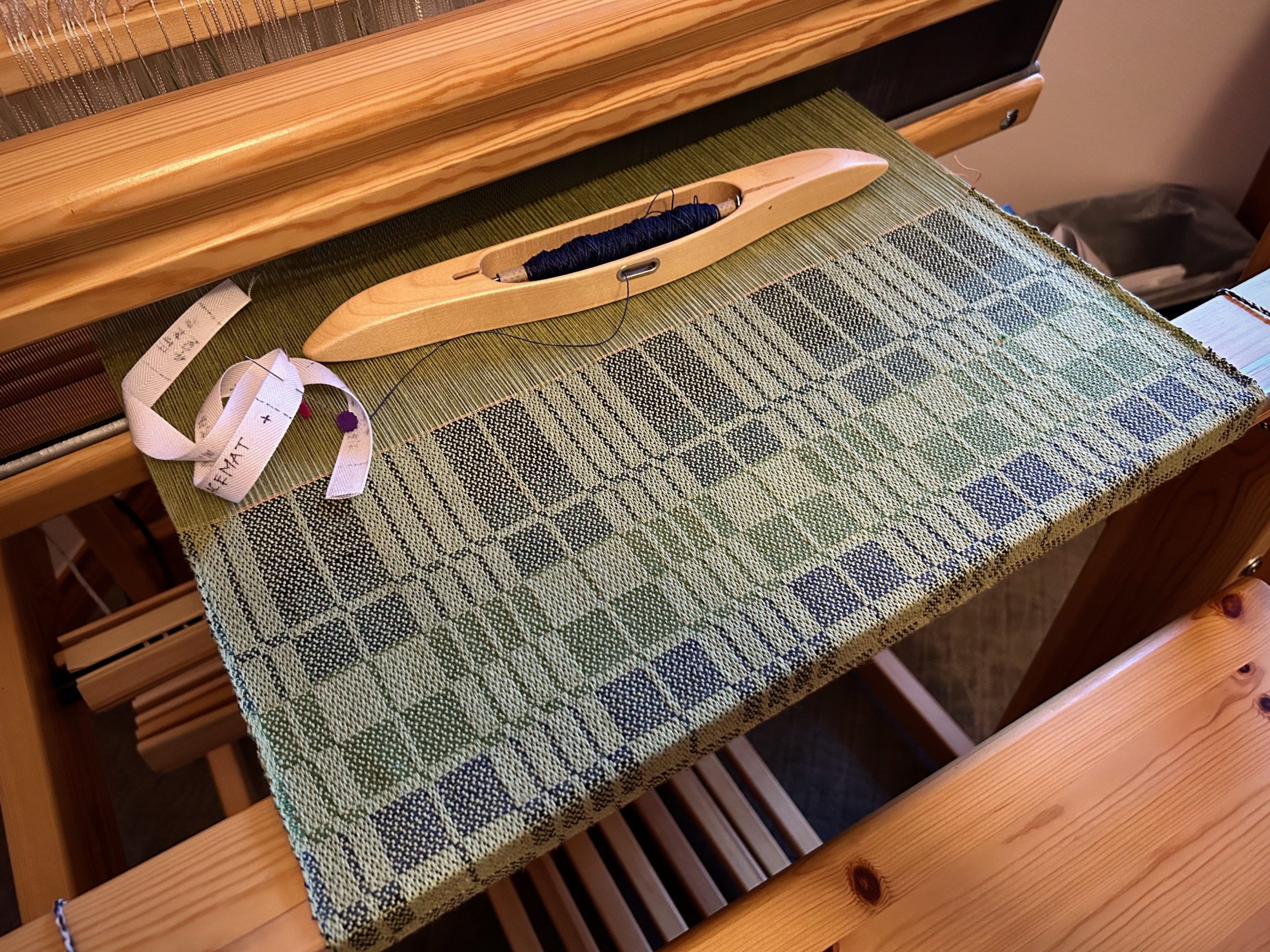
Our lifetime has a distinct red thread rule. A true beginning and end. Life is brief. It doesn’t take long to weave a placemat. But while it’s on the loom, it has the weaver’s full attention. And so also, the Grand Weaver is attentive to all the threads of your life.
May you pay attention to the cutting lines.
Happy Weaving,
Karen
It’s good for a handweaver to flow in creativity. That’s where designs, colors, and out-of-the-box thinking thrive. Add the virtue of persistence, and those creative ideas become tangible articles of cloth. Making things takes more persistence than it does creativity.
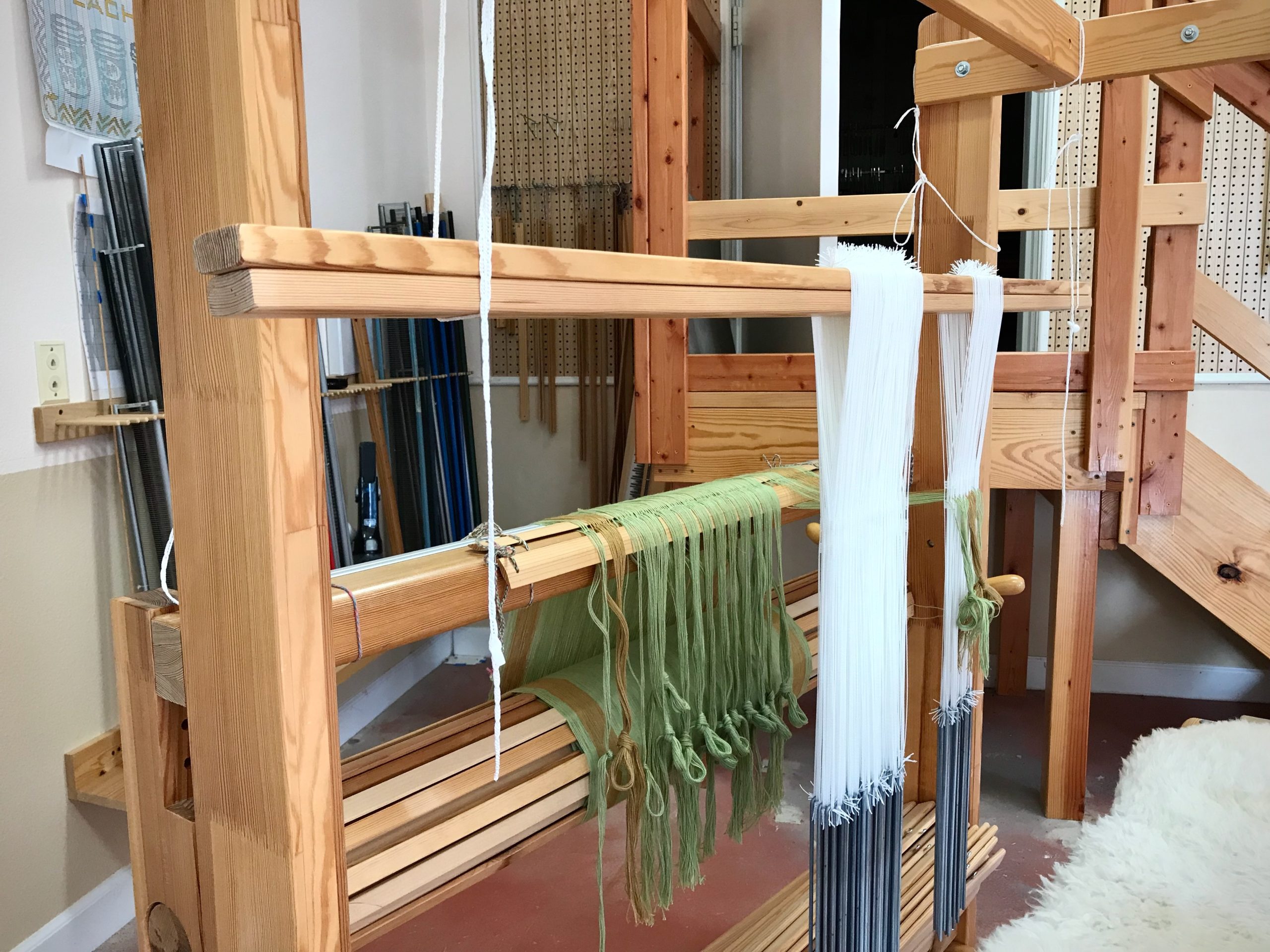
Threading pattern heddles is a repetitive task that I enjoy. I find greater joy, though, in the actual weaving phase of the project. That is when I get to sit at this marvelous instrument and challenge my hands and feet to work together to make the glorious sounds of a loom producing patterned cloth. It does take persistence to get to that point. Even when weaving, my focus is on the outcome – creative napkins for our family meals. The end purpose not only drives my persistence to the finish line, it brings enjoyment to each necessary task along the way.
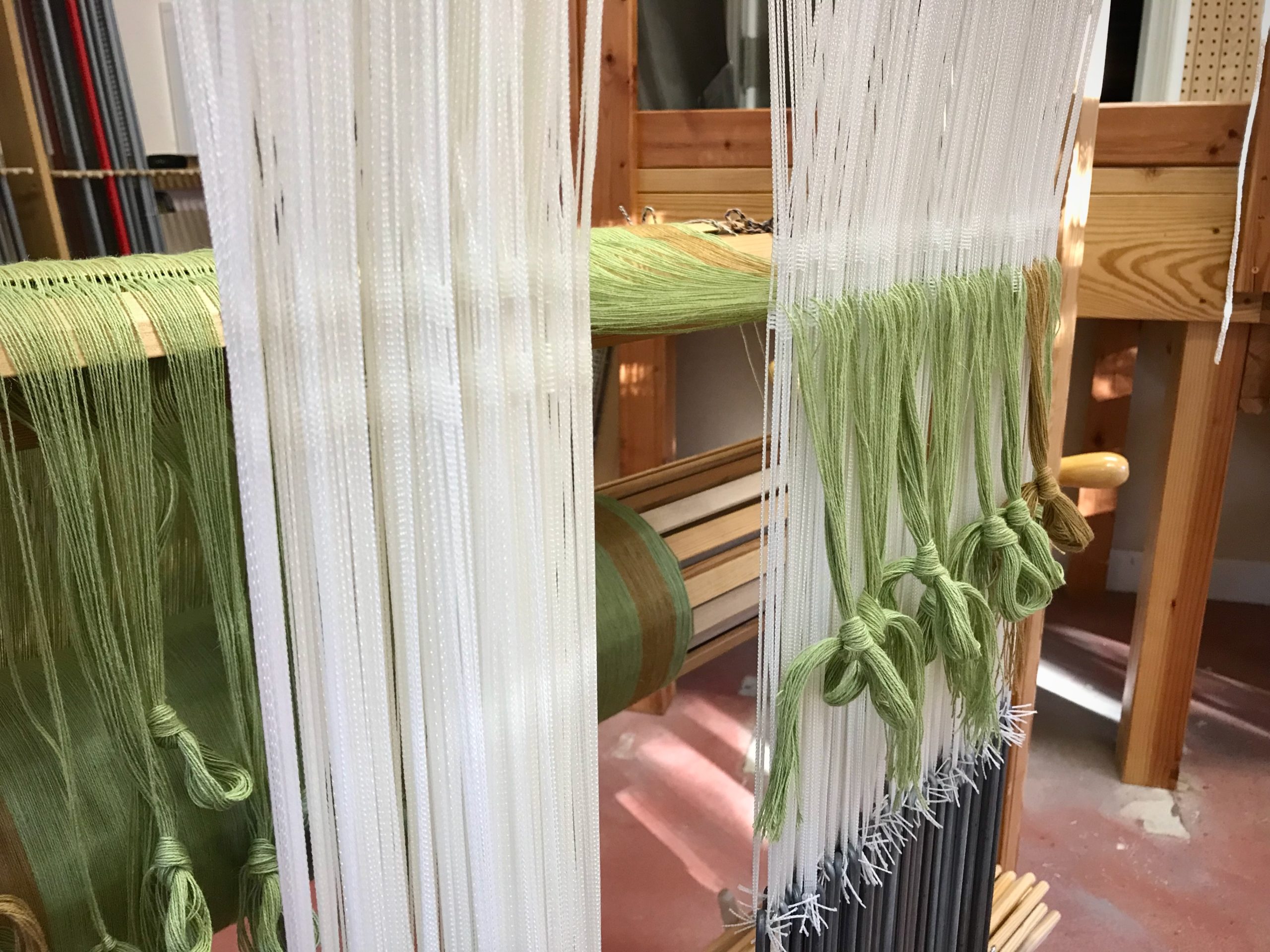
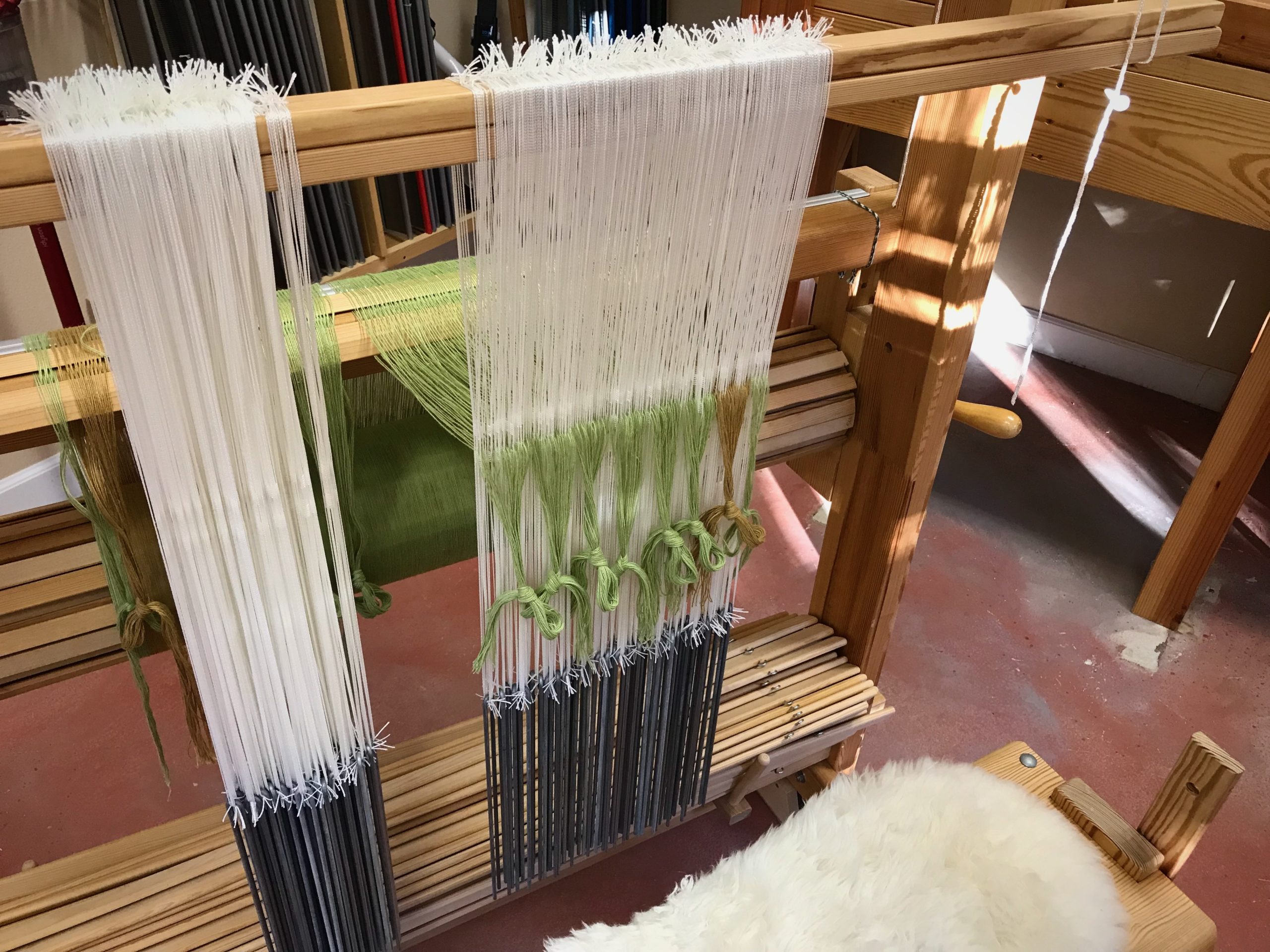
You and I are God’s creative work. He is persistent in the forming of our character, desiring to weave the image of Christ in us. His end purpose brings meaning to all the steps it takes to complete the fabric. Imagine his enjoyment every time we allow his hands to do each necessary task.
May your persistence out pace your creativity.
Blessings,
Karen
Two-block broken twill is a soothing pattern to weave because of its regular rhythm. Even though this is eight shafts, it is not complicated. Simple is good.
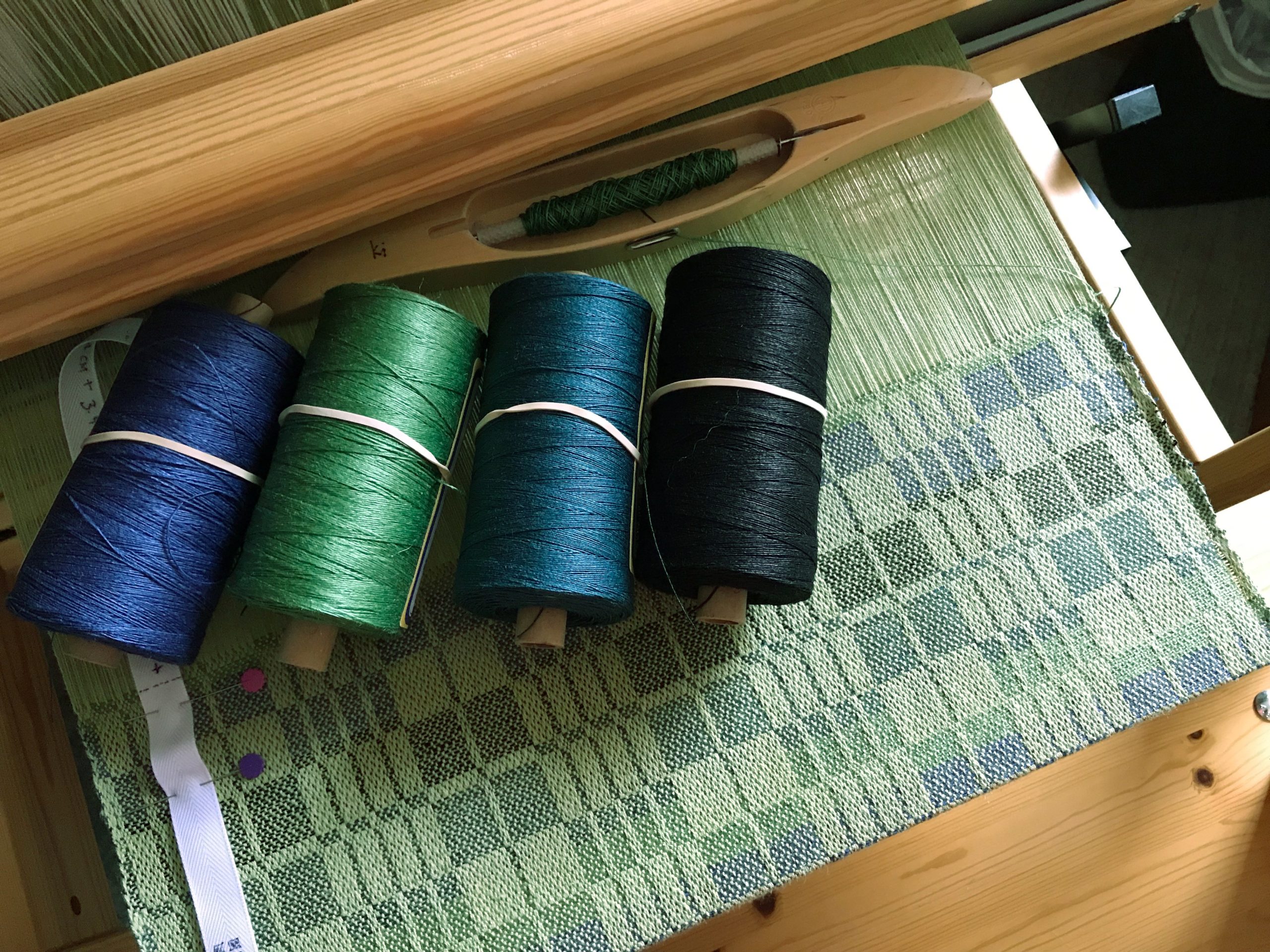
Instead of assigning a different solid color to each placemat, I am using all four weft colors in each one. The colors are arranged in an order that gives the appearance of gradated color. 8/1 tow linen: blue, then green, then teal, then black; repeat, repeat, repeat. There is no set number of picks for each color. Instead, I am changing from one color to the next in an irregular fashion, letting each color softly flow into the next. Regular two-block pattern; irregular color changes.
Keep it simple. The Lord’s pattern for our lives is not complicated. The Lord goes before us. As we follow him, all those irregular changes that happen in our lives turn into a lovely display of softly flowing gradated color. We can rest in that. From this color to the next…
May you find a soothing rhythm to life.
Keep weaving,
Karen